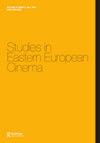IF 0.4
0 FILM, RADIO, TELEVISION
引用次数: 1
摘要
2018年8月3日,彼得·苏尔金去世,享年68岁。他是一位波兰导演,主要以反乌托邦四部曲而闻名(《傀儡》,1979年,《世界大战-下一个世纪》,1981年,《欧比-奥巴》)。《文明的终结》(1984)和《Ga-ga: Glory to The Heroes》(1985)。1970年,苏尔金毕业于华沙美术学院,1975年,他在国立电影、电视和戏剧高等学校(Łódź)的导演系获得了第二个学位。在他的作品中,他把艺术的感性与文学、戏剧和电影的视觉联系起来。舒尔金早期的短片,从20世纪70年代开始,就已经与荒诞怪诞的诗学有着紧密的联系。他接下来的两部电影(圣母与魔鬼,1975年)和(被诅咒的眼睛,1976年)被波兰评论家称赞为具有民间传统和深厚艺术史知识的智慧戏剧。第一部电影以中世纪和文艺复兴时期的宗教视角和当地信仰为主题,以独特的、动态的摄影作品吸引了观众的注意力。后者重述了一个农民的故事,诗意地悬在梦幻般的幻想和表达恐怖故事之间。在舒尔金的第一部完整故事片《魔像》(Golem)中,这种离奇的叙事再次出现。这部电影的剧本是与波兰影评人塔德乌什·索博列夫斯基(Tadeusz Sobolewski)共同创作的,灵感来自古斯塔夫·梅耶尼克(Gustav Meyernik) 1914年的小说。影片的主角帕纳特(由马雷克·瓦尔切夫斯基饰演)可能被解读为一个人造人或克隆人。波兰傀儡试图在卡夫卡的反乌托邦世界和后世界末日愿景的令人痛苦的混合物中面对现实。这个怪诞的地方,充满了腐朽的迹象,包含了一些对专制制度和宣传的强烈的文字和视觉参考。除了其明显的政治意义外,这部电影现在可以通过后人类的比喻来重新阅读,或者通过一些策略来分析,这些策略导致了福柯式的异位,贝克特式的模糊诗学和布莱希特式的异化效应。反乌托邦的比喻也出现在《世界大战:下一个世纪》的虚构故事中,该片大致改编自h·g·威尔斯的著名小说。这部电影于1981年完成,但直到1983年才出现在波兰的电影院。它的未来主义情节始于1999年12月28日,这是火星入侵地球的第12天。在苏尔金的家乡,这样的叙述被认为是对共产党政府于12月13日实施戒严令的黑暗时期的预言。但是,在芝加哥国际电影节首映37年后,《世界大战》超越了这样的内涵,它可以被视为对后现代文化的最新批判,充满了数字媒体模拟和假新闻。在欧比欧巴身上可能会发现更多具有象征意义的人物。文明的终结,世界末日后的社会生活在巨大的穹顶下,等待着方舟,方舟是一艘想象中的宇宙飞船,将所有人带到新世界。影片的主角“软”(由耶日·施图尔(Jerzy Stuhr)表现力地饰演)是一名前宣传工作者,他在人类最后的避难所徘徊。多亏了Witold Sobociński(他也曾与Roman Polanski合作过疯狂和海盗)出色的摄像工作,这个复古的未来世界看起来本文章由计算机程序翻译,如有差异,请以英文原文为准。
Piotr Szulkin (1950 – 2018)
On the 3rd of August 2018, Piotr Szulkin died at the age of 68. He was a Polish director, mostly renowned from the dystopic tetralogy (Golem, 1979, The War of the Worlds – Next Century, 1981, Obi-Oba. The End of Civilization, 1984 and Ga-ga: Glory to the Heroes, 1985). Szulkin graduated from the School of Fine Arts in Warsaw in 1970 and in 1975 he completed his second degree at the directing department of the State Higher School of Film, Television and Theatre in Łódź. In his works, he linked artistic sensibility with literary, theatre and cinematic visions. Szulkin’s early short films, from the beginning of 1970s, already contained strong links with the poetics of absurd and grotesque. His next two films (The Virgin and the Devil, 1975) and (The Cursed Eyes, 1976) were praised by the Polish critiques for the intelligent play with folk tradition and deep knowledge of the history of art. The first film thematises the religious perspective during the middle ages and Renaissance and local beliefs attracting viewers’ attention with unique, dynamic camera work. The latter retells a peasant tale poetically suspended between the oneiric fantasy and expressive horror story. The uncanny narrative returned in Szulkin’s first full feature called Golem. The film’s script, co-written with a Polish film critic, Tadeusz Sobolewski, was inspired by Gustav Meyernik’s novel from 1914. The main protagonists of the film, Pernat (performed by Marek Walczewski), might be interpreted as an artificial human or a clone. The Polish golem tries to face reality in an distressing mixture of Kafka’s antiutopian world and post-apocalyptic vision. This grotesque place, full of signs of decay, contains some strong textual and visual references to the authoritarian system and propaganda. Apart from its obvious political meanings, the film can be nowadays re-read by the postor trans-human tropes, or analysed by some strategies leading to the Foucaultian heterotopies, Beckettian poetics of ambiguity and the Brechtian alienation effect. Dystopian tropes also appeared in the fictional story in The War of Worlds: Next Century, loosely based on the famous H. G. Wells novel. The movie was finished in 1981 but did not appear in the Polish cinemas until 1983. Its futuristic plot starts on 28th of December 1999, which is the twelfth day of a Martian invasion on Earth. Such a narrative was perceived in Szulkin’s homeland as a prophetic vision of the dark period of Martial Law, introduced on 13th of December by the communist government. But thirty-seven years after the its premiere at the Chicago International Film Festival The War of Worlds goes beyond such connotations and may be treated as well as a still up-to-date critique of the postmodern culture, full of digital media simulacrums and fake news. More symbolic figures might be found in Obi-oba. The End of Civilization, where postapocaliptic society lives under the gigantic dome, waiting for the Ark, which is the imaginary space ship taking everybody to the New World. The main protagonist of the film, called Soft (acted expressively by Jerzy Stuhr) is an ex-propaganda worker who wanders around the last shelter of the human race. Thanks to the great camera work of Witold Sobociński (who also worked with Roman Polanski on Frantic and Pirates) this retrofuture world looks
求助全文
通过发布文献求助,成功后即可免费获取论文全文。
去求助
来源期刊

Studies in Eastern European Cinema
Arts and Humanities-Visual Arts and Performing Arts
CiteScore
0.50
自引率
0.00%
发文量
34
 求助内容:
求助内容: 应助结果提醒方式:
应助结果提醒方式:


